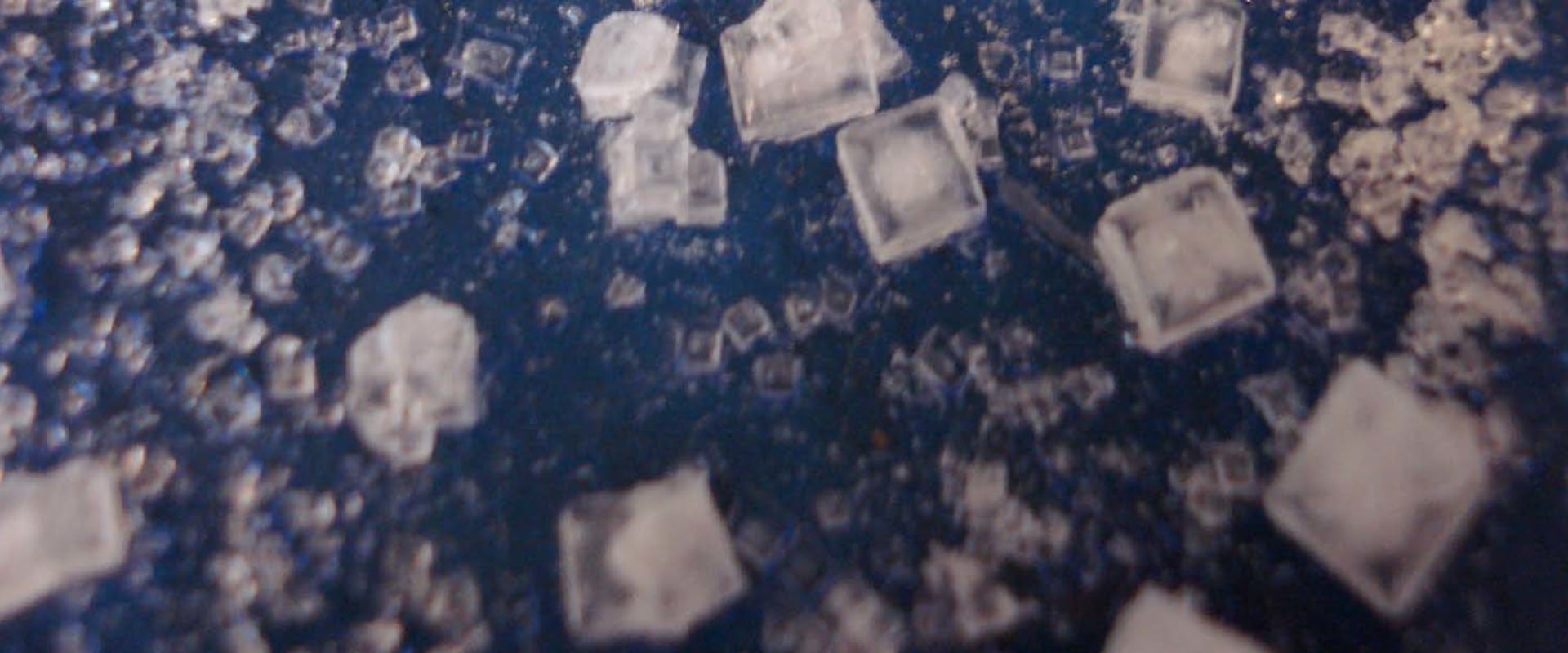Crystals form when a hot solution of a compound cools down and the solute molecules begin to exit the solution and form solid crystals. The rate at which crystals form depends on the evaporation rate of the solvent, which can be controlled by covering the plate with aluminum foil and drilling holes in the foil. The number of holes in the sheet can be increased for less volatile solvents or fewer holes can be made to slow the evaporation of a highly volatile solvent. If magma cools quickly, crystals don't have much time to form, so they're very small.
On the other hand, if magma cools slowly, the crystals have enough time to grow and enlarge. To crystallize a solid, impure compound, add enough hot solvent to completely dissolve. As the solution cools, each solute molecule approaches a growing crystal and rests on its surface. If the geometry of the molecule conforms to that of the crystal, it is more likely to remain in the crystal than to return to solution.
Once the solution has reached room temperature, it is carefully placed in an ice bath to complete the crystallization process. The cooled solution is then filtered to isolate the pure crystals and the crystals are rinsed with cooled solvent. This will encourage crystals to grow on the side of the vial, as there is more solvent in contact with the side and the angle prevents newly formed crystals from falling directly to the bottom of the vial. Recrystallizations for purification purposes are a well-known and widely applied technique, but cultivating crystals suitable for single-crystal X-ray diffraction (XRD) is less well known and is more of an art than a science.
Small crystals have a large surface area-to-volume ratio and impurities are found on their surface and trapped within their matrix. If after two weeks no crystals have formed in a sample, it may be time to reconsider your culture technique with solvents or crystals and try another method. If you find that the evaporation or slow cooling technique provides crystals, but they are not the right size or shape for XRD, both techniques can be extended to include a binary or tertiary solvent system. Single-crystal X-ray diffraction is an excellent way to characterize a compound, but cultivating crystals that provide good data is a skill and an art.
